Growing Tomatoes in Containers: A Video Tutorial
Plant specialist David Yost demonstrates the steps for planting tomatoes in containers that can be placed on a patio, balcony or deck.
Plant specialist David Yost demonstrates the steps for planting tomatoes in containers that can be placed on a patio, balcony or deck.
Container gardens are a great way to add color to any size garden, since they pack a powerful punch of vibrant blooms and foliage into one space. They are moveable, adjustable, and delightful additions to any garden. With summer still in full swing, now is the perfect time to create a colorful and exciting container for your home.
When choosing or building your container garden, the goal is to achieve the ideal combination of plants that thrill, spill, and fill:
Our favorite aspect about container gardens is the customization—you can use any combination of plants that you enjoy to create one you love. Check out our step-by-step guide to creating a custom container garden, and take a look at our designs below if you want some inspiration. Of course, if you prefer to have some assistance putting yours together, our specialists are happy to help!
Summer annuals and perennials provide vibrant color even in the heat of the season. Here are some of our favorite plant selections for the season:
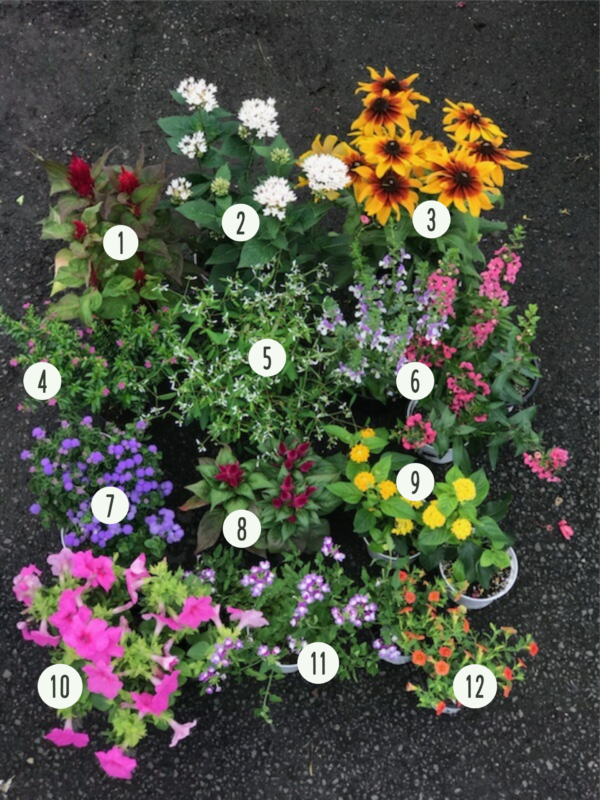
(1) Celosia, (2) Pentas, (3) Rudbeckia- annual, (4) Cuphea (Mexican Heather), (5) Euphorbia, (6) Angelonia, (7) Ageratum, (8) Celosia, (9) Lantana, (10) Petunia, (11) Verbena, (12) Calibrachoa.

(1) Tassel Fern, (2) Coleus, (3) New Guinean Impatiens, (4) Japanese Forest Grass, (5) Begonia, (6) Lysimachia ‘Aurea’ (Creeping Jenny), (7) Trailing Coleus, (8) Heuchera (Coral Bells).
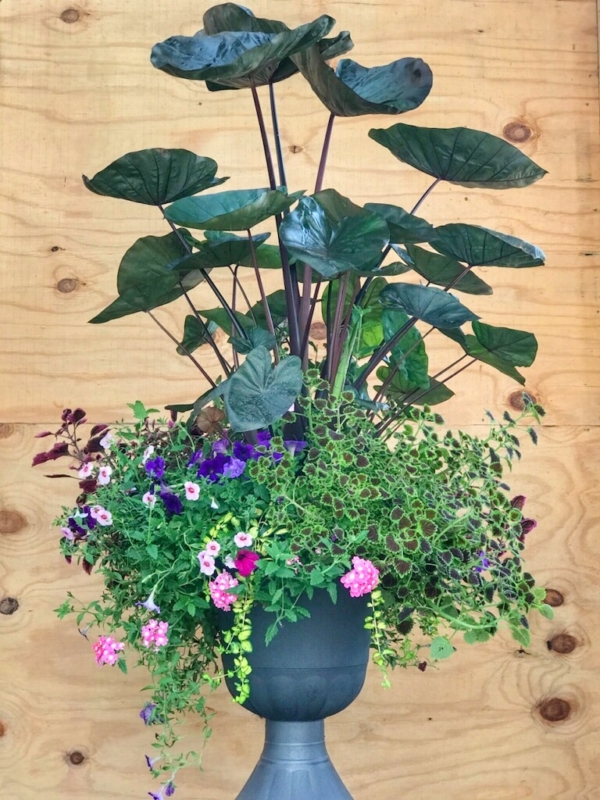
Clockwise from top: Elephant Ear, Trailing Coleus, Verbena, Petunia, Trailing Coleus. This dramatic container for sun makes a statement – elephant ears with their bold foliage and sweeping height grab attention and the vibrant colors of coleus, petunia and verbena complement it with color and blooms at the base. Add this container to any space for a tropical feel.
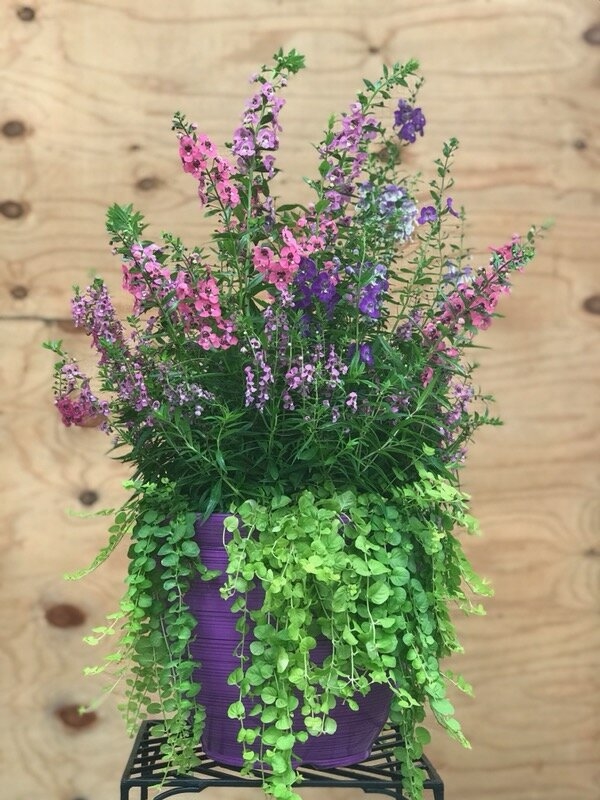
Angelonia (top) and Creeping Jenny (bottom). We love the simplicity of this container, which while only containing two types of plants, is still bursting with summer color and blooms. The elegant stalks of angelonia create texture and movement and the bright green of the creeping Jenny contrasts nicely with the blooms and dark green of the Angelonia.
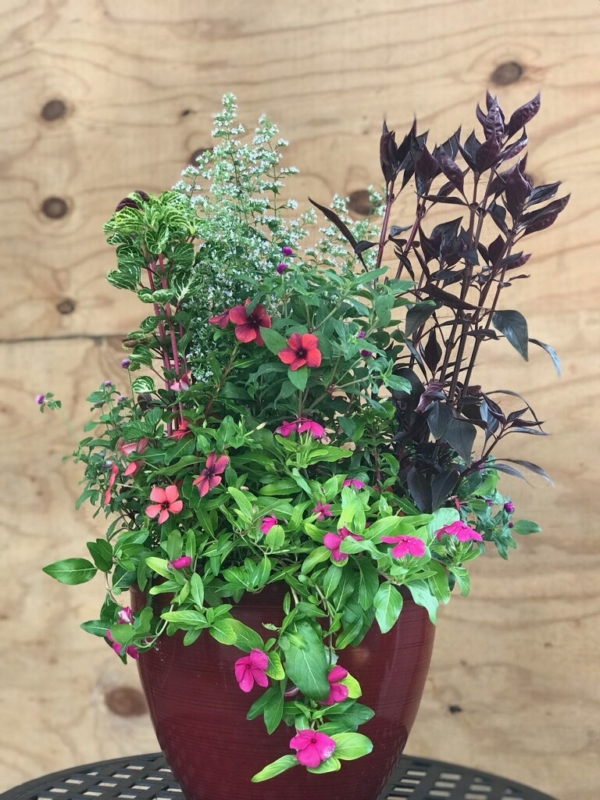
Clockwise from top: Calamint, Bachelor’s Button, Iresine (Cherry Blood Leaf), Vinca, Iresine (Variegated Heart Blood Leaf). This vibrant container is packed full of cheerful vinca and vibrant bachelor’s button. Calamint—which has a lovely scent, cherry blood leaf and variegated heart blood leaf serve as the “thrill” plants drawing the eye upwards, while the vinca trails down the sides. This container will be bursting with color all season!
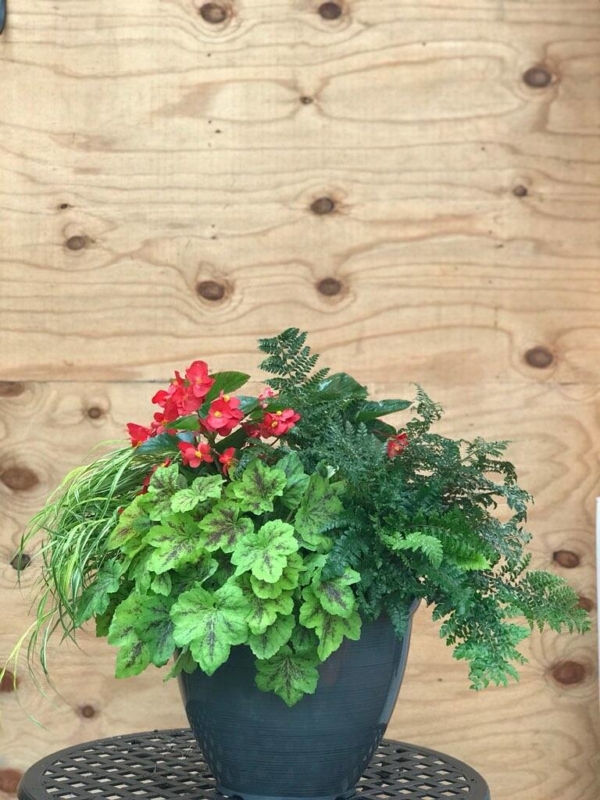
Clockwise from the top: Begonia, tassel fern, heuchera, Japanese forest grass. The tonal color palette and varying textures of this container will draw the eye to even the shadiest spot of a garden. Begonia provides a pop of color, while perennial Japanese forest grass, heuchera and tassel fern provide interest with contrasting textures and shades of green.
Here are some basics that will help you keep your containers healthy and beautiful during the summer:
You can enjoy bulbs planted in containers on your balcony, deck, patio and even out in your garden. All of these spaces benefit from a pop of color come spring. As you plant your containers for fall and winter, try including a few bulbs to extend your containers into late winter and early spring. For example, one of my favorite things to do is to place bulbs underneath my pansies. As winter progresses towards spring, my bulbs emerge through the soil and fill the space between the other flowers with a fresh pop of spring color.
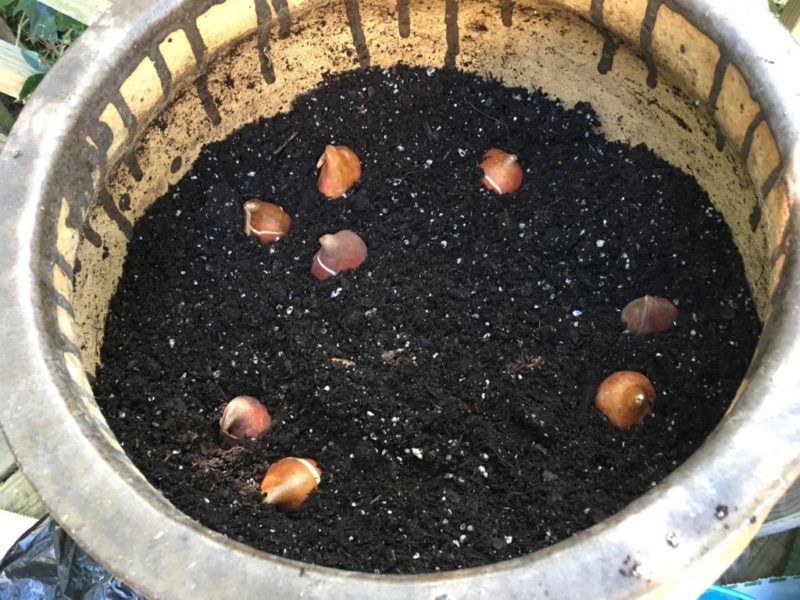
Cover the drainage hole in the bottom of the container with your piece of landscape fabric. Fill the bottom 1/3 of the pot with your potting soil. Place your bulbs on the soil surface. If you’re planting above them, I recommend adding five to seven bulbs. Add 2 to 3” of soil on top of the bulbs and mix in your fertilizer.
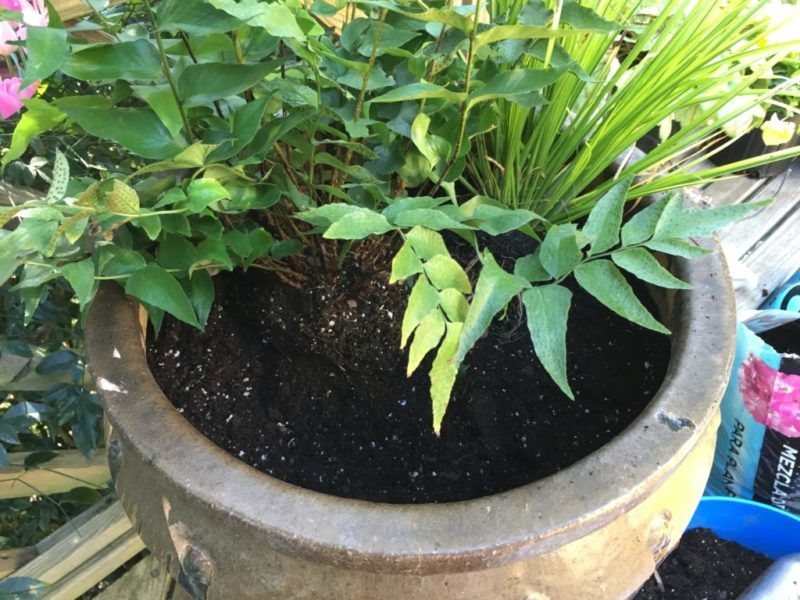

Place your fall and winter plant selections into your container, loosening the roots as you add them. Tuck soil around the plants, as needed. Fill the container all but 1.5 – 2” from the top. Add 1” of your decorative gravel to the surface to discourage the squirrels from digging into your pots and hold the soil in when watering.Thoroughly water your newly planted container and continue to check it for moisture every three to five days throughout the fall. During the winter months your container will not require much water to survive. I rarely water in the coldest part of winter.
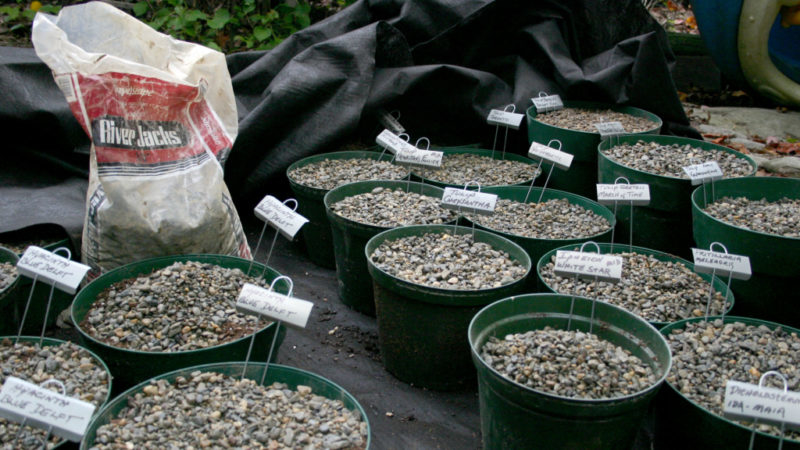
I also enjoy potting up containers filled with bulbs that I overwinter and then place throughout my yard come spring. For this approach l often plant the bulbs in 2 – 3 gallon plastic pots that I can pop into a more decorative container just as the bulbs come into bloom. When you’re planting bulbs only in a container, you can place as many bulbs as you can fit on the soil, leaving ½” between each and following the planting instructions above, skipping step four. Depending on the number of containers you have time and space for, you can plan and plant for a succession of blooms by selecting a variety of types (such as hyacinth, tulips and narcissus) with various bloom times.
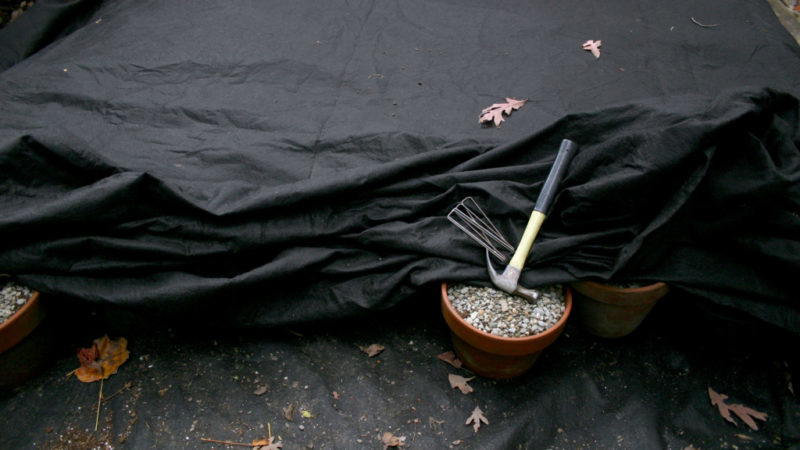
Once the containers are planted, I’ll give the bulbs extra protection by wrapping them in groups with landscape fabric and placing them under shrubs, against the house wall or in another space where they are out of sight.
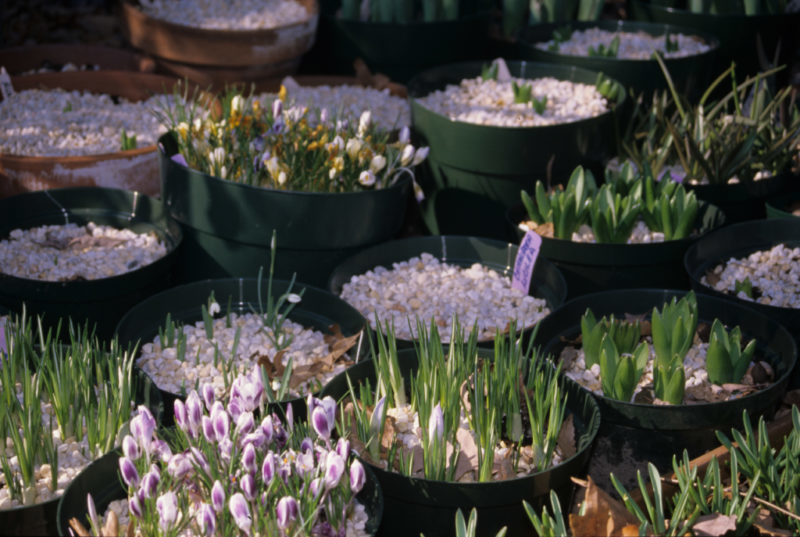
I cover my containers completely in November and December and uncover them in February after the severe cold has passed to allow them to start their growth.
Containers placed on balconies, decks and in other exposed areas may benefit from additional protection during really cold weather. I’ve found an easy way to increase the temperature by a few degrees. I wrapped the container with bubble wrap (not underneath as drainage is necessary) and wrap over the bubble wrap with burlap or another material that I can tie at the top and bottom with string at the top and bottom, then wrap again over the bubble wrap with burlap or other materials of choice. Tie with string, or a bow if you are feeling festive.
I love that this method of planting bulbs provides beauty throughout the year. Each season, my bulb containers transition and my garden transforms with the new plants that come into blooms from the same set of containers.
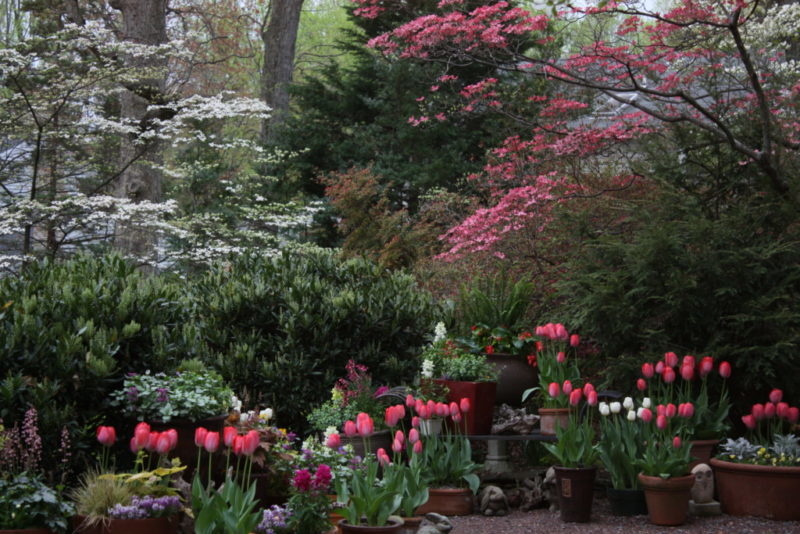
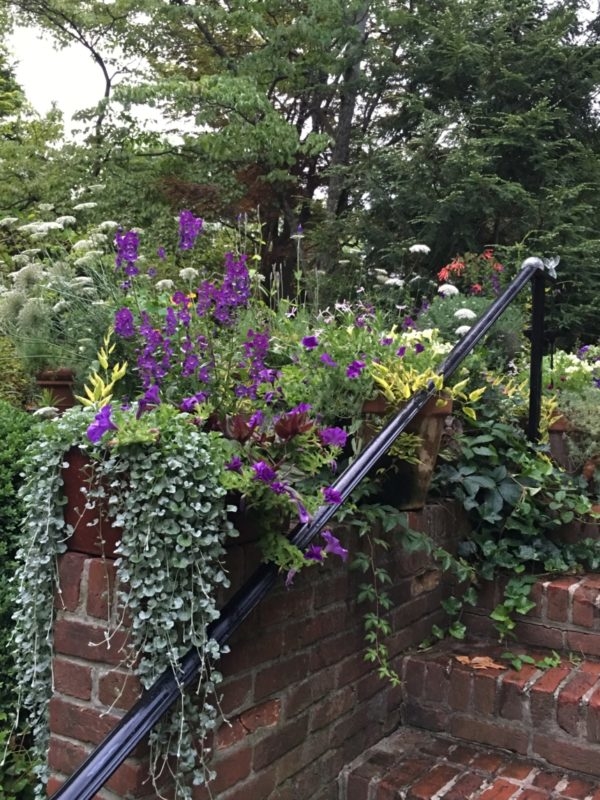
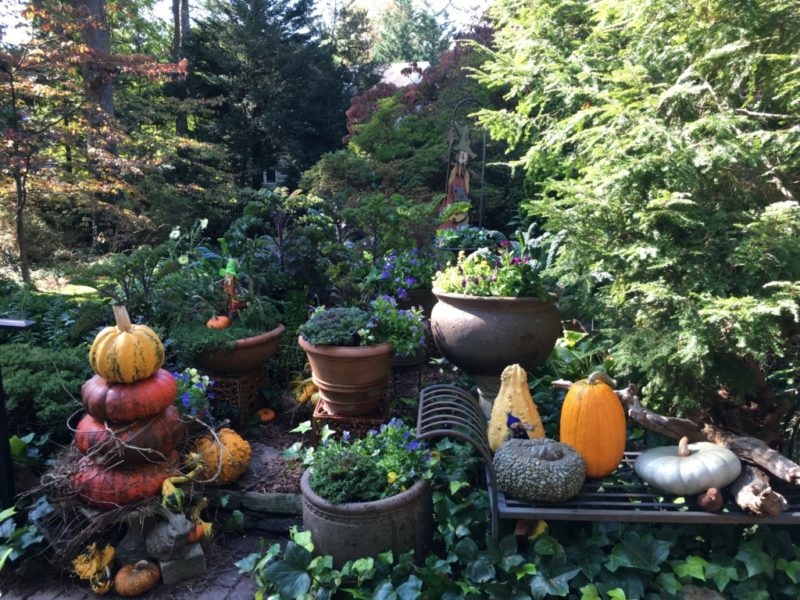
I plant my containers for fall and winter with bulbs beneath for the spring show. Not only can I dress my display up for fall with pumpkins and gourds, but I can also decorate for the holidays with lights, berries, and cut holiday greens.
Containers are changeable, moveable and groupable, but most importantly, enjoyable. They can be tailored from formal to naturalistic and anywhere in between. As the weather cools and we welcome the fall season, I always get excited about playing with plants in containers and combining annuals and perennials that I can enjoy immediately and even into winter. This year, I’m creating fall containers including annuals for fall color, plus biennials and perennials that will last through winter. These arrangements will last for two seasons: the annuals can be removed when the frost takes them, leaving space for your biennials and perennials to grow. Here are a few of my favorite plant selections that combine beautifully in fall containers:
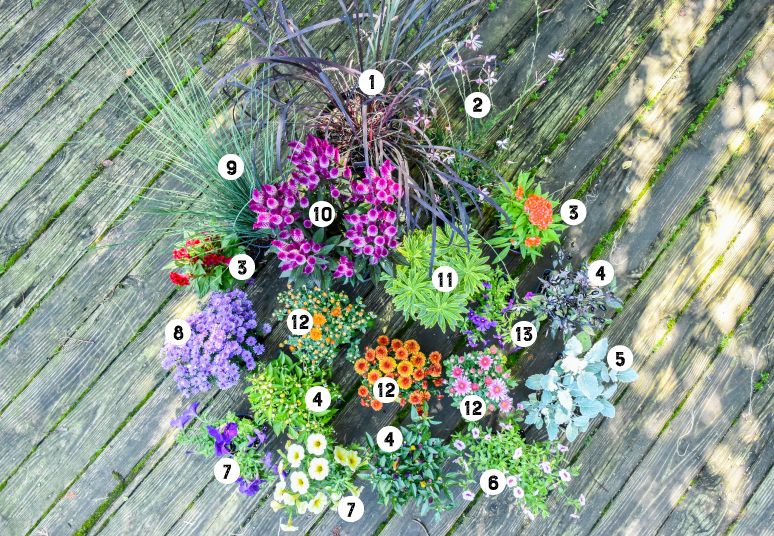
Perennials: (1) Schizachyrium, (2) Gaura, (5) Dusty Miller, (8) Aster, (9) Juncus, (11) Euphorbia, (12) Mums; Annuals: (3) Crested celosia, (4) Ornamental pepper, (6) Calibrachoa, (7) Petunia, (10) Celosia ‘Intenz’ (13) Calibrachoa
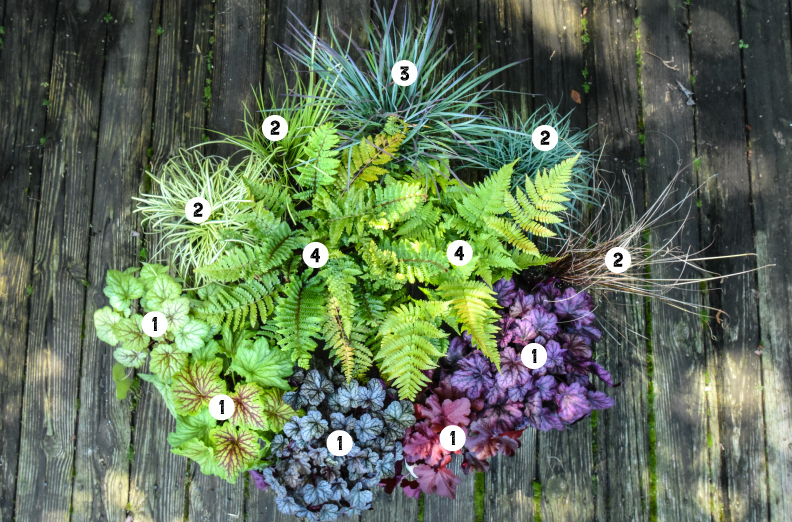
Perennials: (1) Heuchera (coral bells), (2) Carex, (3) Schizachyrium ‘Standing Ovation’, (4) Fern
If you love your fall season annuals, you can easily lengthen their life span by covering your containers with lightweight frost cloth when frost is predicted. Depending upon the weather, this can take your fall annuals into November in our area.
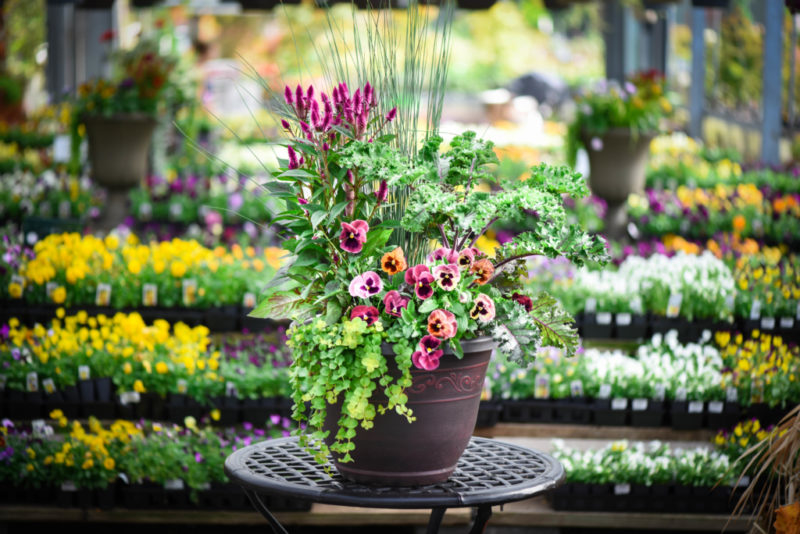
Clockwise from top: Juncus ‘Blue Arrow’, Kale ‘Redbor’, Pansy, Lysimachia ‘Aurea’ (creeping Jenny), Celosia ‘Intenz’ The plume-like blooms of celosia, graceful height of juncus, and earthy texture of kale combine beautifully to thrill the eye in this container. Bloom-rich pansies help fill the space, while the bright greens of creeping Jenny pull your eye down the container with its graceful spill. Annual celosia will die back with frost, leaving room for the rest of these plants to fill the container. All of these plants are sun loving and require a minimum of 5 to 6 hours of sun per day.
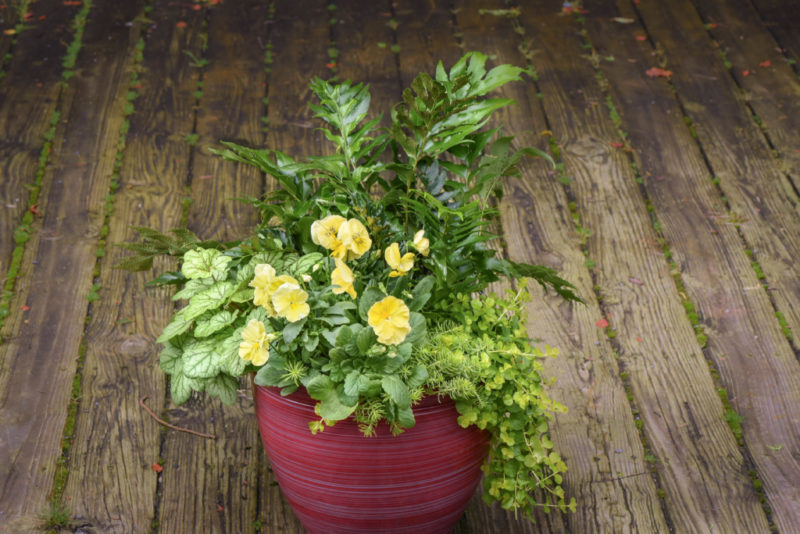
Clockwise from top: Cryptomium (Japanese Holly Fern), Lysimachia ‘Aurea’ (creeping Jenny), Sedum ‘Angleina’, Pansy, Heuchera (coral bells) The fronds of cryptomium add height and thrill the eye in this container, providing beautiful evergreen foliage throughout the seasons. The variegated foliage of perennial heuchera and abundant blooms of pansies fill the central space while perennial sedum and creeping Jenny spill over the edge of the container. This tonal color palette is beautiful in part shade to full shade conditions. All of the plants here prefer to avoid the heat of the afternoon sun.
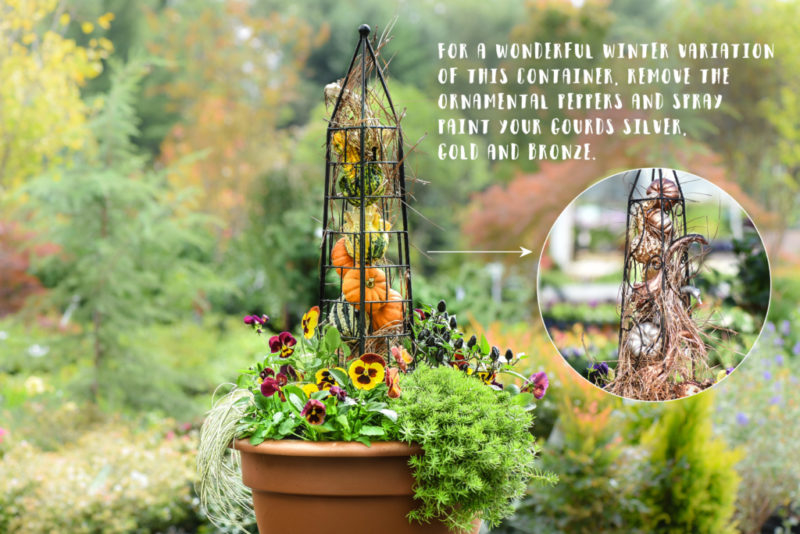
Clockwise from top: Pumpkin tower, Ornamental peppers, Sedum ‘Lemonball’, Pansy, Carex One of my favorite tactics in designing fall containers is to add height and tons of seasonal interest using a tower filled with small pumpkins and gourds. The fall colors of bright orange and yellow lead the eye down the tower into a base filled with contrasting foliage and blooms. In the base, variegated pansies and ornamental peppers fill the space while carex and sedum spill over the edge of the container. To transition this container into the holidays and winter months, simply remove the ornamental peppers that will die with the frost and spray your pumpkins and gourds shades of gold, silver and bronze.
Here are some basics that assist in winter hardiness for plants and pots:
Julia Reed, Merrifield Plant Specialist
I love houseplants. So much so that my entire dining room doubles as a greenhouse. One of my favorite houseplants is the succulent. They’re easy to care for, beautiful to look at, and bring instant life to your home or office. You can easily add a succulent display to your space by following these easy steps.
To begin, determine the colors and textures you’d like to see in your space. I recommend choosing an assortment of varieties to pull your eye through to the different areas of the container. You can’t go wrong in picking those your eye is naturally drawn to. Here are some of my favorites.
Next, select your container and potting medium. You’ll want to choose a shallow, open air pot as succulents don’t have a deep root system and like to be open to the air. A closed terrarium structure will not make for happy succulents! The pot should also have a hole at the bottom to assist with drainage.
Succulents do best in fast draining soil. When potting succulents, I like to use a small layer of gravel with Cactus Mix or Pro-mix soil. If you’re using Pro-Mix, you’ll also want to pull aside some sand to help with drainage. Finally, you can also increase the drainage by using decorative sand or gravel on the surface.
Step 1: Place a piece of typar or grower’s cloth on the bottom of your pot, over the drainage hole.
Step 2: Lay down a layer of gravel, between a half inch and an inch. This will help with your container’s drainage.
Step 3: Fill your pot with Cactus Mix or Pro-mix. We started by filling our pot half-way with soil (you can always add more, if needed). If you are using Pro-mix, I recommend mixing one part sand to two parts Pro-mix to help with drainage.
Step 4: Arrange the plants the way you want depending on your style. You don’t need to break up the roots. If the roots are covering the edges of their pot then you can lightly tease them.
Step 5: Fill in and around the plants with more soil to cover the roots.
Step 6: If you want, add gravel or sand as a decorative finish.
Finish off your container with fresh water. Move your container over to your sink and water directly into the soil until the water runs out the bottom.
Succulents will take as much light as they can get. They prefer at least four hours of bright, direct light. You can find direct light in sunny areas of your home within one to two feet of an unobstructed south or west facing window. In these spaces, the sun should directly touch the plant. If they are not in good light, they will start reaching for the light, which will make them stringy. A compact succulent is a pretty succulent. Generally, you won’t have to worry about your succulents getting sunburned when they’re indoors.
Succulents store water in their leaves. You can always tell when it’s time to water by feeling the lower leaves of your succulents. If they feel flat and deflated, then they are thirsty. When it comes to watering, it’s safer to let them run dry than moist. We recommend checking them for water every few days. Keep note of the day you planted them and the day they feel dry to establish a general number of days between waterings. At my house, I’ve found that my succulents tend to need water about every two weeks. When watering in a regular container, water directly into the soil until you see water coming out the bottom.
To keep your succulents well-fed and long lasting, you can fertilize from March to September. We recommend Schultz Cactus Plus Liquid Plant Food. Keep in mind that feeding them will cause them to grow faster!
Even though it might be tempting, try not to baby your succulents. As long as they’re in a sunny spot with regular waterings, they’ll be happy!

